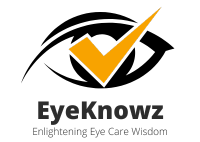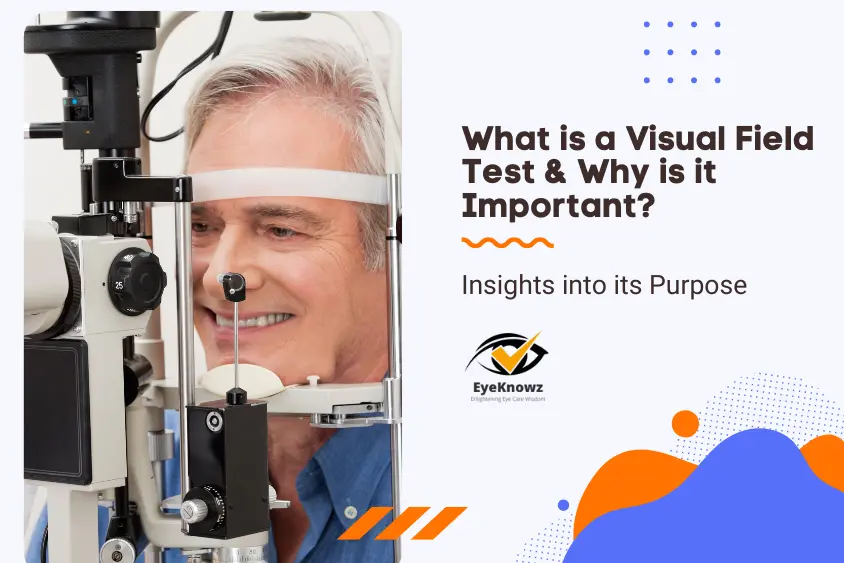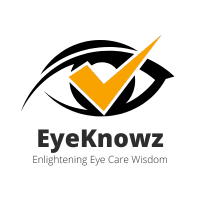What is a visual field test?
Ophthalmologists measure sight by asking you to keep your head still while focusing on a central point. You can also see above, below, and to the sides of the central point. At some point, your vision will fade in all directions.
What is a Visual Field Test & Why is it Important? Visual field refers to the area you can see at one time without moving your eyes. With a visual field test, your eye doctor can determine whether you have restricted peripheral vision, detect any blind spots, and detect any eye disease that has affected your vision. Your doctor uses this test to detect and monitor glaucoma. Your doctor may decide to perform a more frequent visual field test based on the severity of your glaucoma.
When the damage is severe, the patient does not notice any changes in the visual field. A variety of other diseases can also impact the visual field, including cataracts, strokes, macular degeneration, and diabetes. Your doctor will interpret the results of your exam based on these possible effects.
Importance of visual field tests:
In order to maintain good ocular health, it is essential to conduct visual field tests. Your optometrist can monitor your eyes’ health and potential vision loss with regular visual field testing. The visual field test is important in diagnosing retinal conditions and identifying retinal nerve damage. Early detection is crucial to prevent permanent nerve damage.
Detecting retinal nerve damage (a scotoma) facilitates staging an ocular disease based on its size and shape. Moreover, if your eye doctor has diagnosed you with glaucoma or ptosis, this test will help determine how much vision loss or obstruction is caused by the disorder.
The purpose of the visual field test is to enable your ophthalmologist to figure out which conditions are causing your vision problems. Testing regularly can enable your doctor to determine what type of disease or injury you may have. Maintaining eye health requires regular comprehensive eye exams, especially if you have diabetes or other eye conditions.
Types of visual field tests:

The visual field tests require you to sit still while your doctor performs them. Different types of visual field defects are:
Confrontation visual field test:
Eye doctors typically use it to detect abnormalities in your visual field and determine if further testing is necessary.
In confrontational visual field testing, your optometrist stands a few feet away while you remain in the same spot looking straight ahead with one eye covered. You’ll see your doctor holding up something, such as a picture, or even their fingers in your side vision. In your peripheral vision (side vision), your doctor may hold up a number of fingers and ask how many you see as you observe the target in front of you. You’ll let them know if the object disappears or is harder to see as you watch.
Automated static perimetry test:
You can use this test to create a detailed map of your visual field, which can be used to diagnose ocular conditions and monitor diseases. The perimeter test requires you to sit in front of a bowl-shaped device. Testing will be conducted separately for each eye. In order to determine whether you can see clearly, you will look through a lens containing your optical prescription.
Throughout the test, you will be asked to focus on a central target. There will be dim lights positioned throughout the bowl, and you will need to press the button whenever you see one. It tracks which lights you did not see.
During the test, you may blink normally. You may also pause the test if you wish to take a break. During the test, you are faced straight ahead, so your doctor can see which lights are outside your central vision. This test helps show if there is vision loss outside of your central area because glaucoma affects peripheral vision.
Frequency doubling perimetry:
Your ophthalmologist can also assess loss of vision using frequency-doubling perimetry. An optical illusion is used in this test to check for damage to the visual field. There are vertical bars on a perimeter screen- generally black and white. The flickering of these bars is controlled at varying speeds. Your field of vision may be lost at some points in the test if you cannot see the vertical bars.
Electroretinography:
An electrical signal measured from the retina’s light-sensitive cells (photoreceptors) is used to diagnose vision loss associated with certain retinal diseases. In order to perform this test, you will be given numbing eye drops, and your eyes will be dilated. Speculums are instruments that hold your eyes open. An electrode is placed on your cornea. There will be flashing or varying patterns of light inside a bowl-shaped machine. The electrode measures your eye’s electrical activity.
Amsler Grid:
A black-and-white grid pattern with a dot at the center makes up the Amsler grid. The grid can be used to determine whether the central visual field has any issues. A wavy grid line, blurred grid line, or a lack of grid lines may indicate a vision problem. This quick test measures your central vision (the middle of your visual field) and provides very little information about your eye health.
Your role in the test:
Your eye doctor performs a visual field test during a regular eye exam if you have been diagnosed with an ocular disease or condition that can cause retinal nerve damage or vision loss. Your peripheral vision is mapped by the most commonly used tests using your input about your vision. When your visual field is worsening, it may mean that your eye pressure is too high, requiring further treatment. It is possible that your optometrist will ask you to repeat the test more than once over a relatively short period of time, such as a few months apart. Because the test is subjective, patient fatigue or omissions may affect the outcome.
Why Should You Get a Visual Field Test?
Visual field testing is an essential component of regular eye care for people at risk for loss of vision due to disease or another problem. A vision field test will also be conducted if you have the following medical conditions, which may lead to sight-threatening eye conditions:
Glaucoma: High eye pressure damages the optic nerve progressively in this severe condition. Glaucoma can affect vision differently depending on its type. Visual field tests can offer insight into glaucoma progression since many types only show symptoms in the advanced stages. Glaucoma diagnosis and treatment include visual field tests. An optometrist can monitor the progression of glaucoma by testing the visual field.
Stroke: Usually, strokes occur when the brain loses circulation to vital areas. Typically, strokes are either ischemic (blockage of blood flow) or hemorrhagic such as bleeding of the blood supply), both of which cause significant damage to the brain.
It is estimated that half of all stroke victims suffer from a loss of visual field. When a stroke occurs, specific patterns of field loss will often help pinpoint its location. Stroke survival rates are higher, which means more people are living with stroke-related problems, including vision problems.
Brain Tumors: Also, VFT can detect brain tumors, swelling in the brain, brain injuries, autoimmune diseases, such as multiple sclerosis, and thyroid abnormalities. Due to their ability to affect parts of the visual system, such as the optic nerve, tumors can interfere with the transmission of messages between the eyes and the brain. In turn, this can result in reduced vision, double vision, or even loss of vision.
Long-term use of certain medications: As long-term medications become more widely used, VFT is increasingly used to detect and monitor side effects in the eye. In some people with autoimmune diseases like rheumatoid arthritis or lupus, Plaquenil can damage the macula, causing central vision loss. Plaquenil patients should get regular eye exams.
Retinitis Pigmentosa: A rare genetic eye disease, retinal pigmentosa affects the retinal cells by deteriorating them. It affects the rods and cones of the eye, which are the photoreceptors. Most photoreceptors, especially those on the outer parts of the retina, are rod photoreceptors, which help us see in low light. The cones are responsible for detailed vision. Retinitis pigmentosa affects rods first, causing peripheral vision problems.
Conclusion:
Regular eye exams are essential for maintaining good eye health. A visual field test will be conducted during your exam to assess your ability to see above, below, and on each side. A vision test should be scheduled as soon as possible if you notice a change in your vision. Maintaining a visual field test record when your eyes are healthy is a great way to help monitor vision changes as they occur. It provides a starting point for you and your eye doctor.
FAQs:
Can you cheat on a visual field test?
Cheating a visual field test is not advisable and can lead to inaccurate results. Visual field tests are crucial for assessing your vision health, and dishonesty during the test can prevent accurate diagnosis and treatment. It’s important to provide genuine responses to ensure proper eye care.
Do you wear glasses for a visual field test?
It depends on the test’s type if you need glasses during a visual field test. Some eye care professionals recommend that you remove your glasses to measure your natural vision precisely. However, some tests require wearing regular glasses to accurately assess your day-to-day vision abilities. Follow your eye care specialist’s instructions before the exam.
What are the tips for taking a visual field test?
Taking a visual field test can be straightforward if you keep a few tips in mind, such as staying relaxed and alert during the test. Follow the technician’s instructions carefully, focusing on the central fixation point. Avoid unnecessary movements of your head and eyes.






